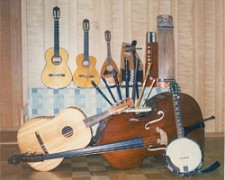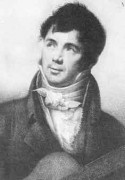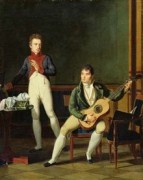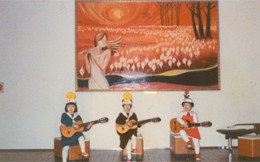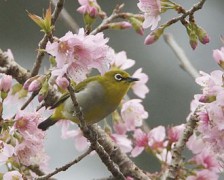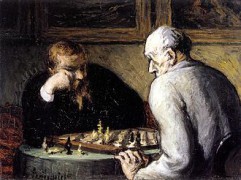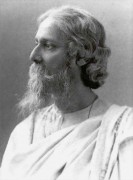- Home
- 1&s の検索結果
England の検索結果: 24 件
Ode to the West Wind / 西風に寄せる歌
Ode to the West Wind / 西風に寄せる歌
秋去冬來春不遠。秋去て冬来りなば春遠からじ。
If winter comes, can spring be far behind ?
冬の厳しさの中に、すでに春は来ているんだね。そうさ、希望ひとつで生きるのさ。家庭・学校・社会・経済そして健康生活の挫折は、人生の挫折ではないんだね。そうさ、絶望しないで一歩前進してごらん。あなたの人生がチョッピリ? いや、大きく変わるかも! (美幌音楽人 加藤雅夫)
関連記事
パーシー・ビッシュ・シェリー(Percy Bysshe Shelley、1792年8月4日 – 1822年7月8日)は、イングランドのロマン派詩人。小説家のメアリー・シェリーは妻。 長詩『西風の賦』または『西風に寄せる歌』(Ode to the West Wind, 1819年)(末句「冬来たりなば春遠からじ」(”If Winter comes, can Spring be far behind?”が日本では有名) (パーシー・ビッシュ・シェリー – Wikipedia)
西風に寄せる歌 / “Ode to the West Wind” is an ode, written by Percy Bysshe Shelley in 1819 near Florence, Italy. It was originally published in 1820 by Charles in London as part of the collection Prometheus Unbound, A Lyrical Drama in Four Acts, With Other Poems. Perhaps more than anything else, Shelley wanted his message of reform and revolution spread, and the wind becomes the trope for spreading the word of change through the poet-prophet figure. Some also believe that the poem was written in response to the loss of his son, William (born to Mary Shelley) in 1819. The ensuing pain influenced Shelley. The poem allegorises the role of the poet as the voice of change and revolution. At the time of composing this poem, Shelley without doubt had the Peterloo Massacre of August 1819 in mind. His other poems written at the same time—”The Masque of Anarchy”, Prometheus Unbound, and “England in 1819″—take up these same themes of political change, revolution, and role of the poet. (Ode to the West Wind – Wikipedia)
関連サイト
関連エントリ
Haiku of The Day (Japan) – 美幌音楽人 加藤雅夫
乳がん闘病記「4分の3の乳房」(北見市、佐藤りかこ)発行 – 美幌音楽人 加藤雅夫
手作り短冊「緑萌え 生きるよろこび」(美幌町配食サービス) – 美幌音楽人 加藤雅夫
ツイッター (Twitter)
フェイスブック (Facebook)
ギター変奏曲の魔笛について
ギター変奏曲の魔笛について
関連記事
フェルナンド・ソル(スペイン語:Fernando Sor, カタルーニャ語:Ferran Sor i Muntadesファラン・ソル・イ・ムンタデース, 1778年2月13日?(洗礼日は2月14日) – 1839年7月10日)は、スペイン・バルセロナ生まれの作曲家・ギター奏者。スペインでは「ギターのベートーヴェン」とも呼ばれる。ソルは、ギターの音楽レベルを可能な限り高め、ギターを世に広める努力をしたギターの第1期黄金期に活躍した一人である。また、過去200年において、コンサート楽器としてのギターのための曲を最も書いた作曲家の一人である。作風 / ソルの作風は古典派の様式を忠実に受け継ぐものであるが、後年の批評家にはロマン派と見なされる場合が多い。彼は序奏部に短調を好んで用いたが、代表作『モーツァルトの「魔笛」の主題による変奏曲 Variaciones sobre un tema de Mozart』でも、ホ短調による序奏から、ホ長調の主題へと転調していく構成が採られ、『グラン・ソロ Gran solo』においても、ニ短調の序奏に始まり、それからニ長調の主題へと移っていく。他の特徴としては、不協和音を大胆に取り入れ、それが作品に独特の効果を与えている点である(ただし、ここでいう「不協和音」とはモーツァルトなど特に古典派の作曲家が好んで使用した低音の保続音を用いてのことなので、古典派としては常例である)。彼の作風には、もちろんハイドンやモーツァルトの大きな影響を伺うことが出来るが、他の同時代の作曲家とは異なったスタイルの作曲家として、言及される必要があるだろう。作品 / ギター奏曲 / 『モーツァルトの「魔笛」の主題による変奏曲』 Variaciones sobre un tema de Mozart Op. 9 (フェルナンド・ソル – Wikipedia)
Introduction and Variations on a Theme by Mozart, Op. 9, is one of Fernando Sor’s most famous works for guitar.[1][2][3][4][5] It was first published in London in 1821 and dedicated to Sor’s brother Carlos. Editions / The title page of the first edition reads “As performed by the author, at the Nobilities’ Concerts.” The French edition was published by Meissonnier, dated roughly in the same period, and had one less variation, no coda, and some differing notes. It is thought that this version could have been a simplification of the original work. However, in 1826 or 27, Meissonnier brought out another version, this one identical to the London first edition. The piece / This piece embodies Fernando Sor’s best characteristics as a composer, requiring great technique. It is a relatively frequently performed piece that serves as a “testing ground for every aspiring guitarist.” As said of this piece and Op.7, the Folies d’Espagne, by Brian Jeffrey, author of the largest Sor biography to date, “no space is wasted and the music devotes itself not to “guitaristic” effects but only to itself.” The work is based on a melody from Mozart’s opera The Magic Flute. The opera was first performed in Vienna, 1791, and in German, while the first performances in Italian took place in 1794, so Sor could have feasibly written the piece any time since then. However, it is more likely that he was inspired to write the piece when the first major production was premiered in England in May 1819, when Sor was in the area. The theme and the variations are based on this one that was used in numerous composer’s arrangements, some being by the flutist Drouet, by Herz, and by Mikhail Glinka. It is the theme played near the end of Act I called “Das klinget so herrlich”, in Italian either translating to “O dolce concento”, “O dolce armonia”, or, as Sor chose to use, “O cara armonia”. This last translation was also used in the vocal score of The Magic Flute published in Birchall, London in around 1813. (Introduction and Variations on a Theme by Mozart (Sor) – Wikipedia)
音楽動画
『モーツァルトの「魔笛」の主題による変奏曲』 Variaciones sobre un tema de Mozart Op. 9 (アンドレス・セゴビア)
関連エントリ
ツイッター( Twitter)
フェイスブック (Facebook)
Lady Day 3月25日 聖母マリアの受胎告知の日
Lady Day 3月25日 聖母マリアの受胎告知の日
関連記事
聖母マリアの受胎告知の祝日(Lady day) / 天使ガブリエルが聖母マリアに救世主(メシア)の母となることを告げた受胎告知の日。(3月25日 今日は何の日~毎日が記念日~)
聖母マリアお告げの祝日(キリスト教) / 受胎告知の日。(3月25日 – Wikipedia)
受胎告知(じゅたいこくち)とは、キリスト教の聖典である新約聖書に書かれているエピソードの1つ。聖告(せいこく)、処女聖マリアのお告げ、生神女福音(しょうしんじょふくいん)とも言う。一般に、処女マリアに天使のガブリエルが降り、マリアが聖霊によってキリストを妊娠したことを告げ、またマリアがそれを受け入れることを告げる出来事である。マリア崇敬の思想を背景として、キリスト教文化圏の芸術作品の中で繰り返し用いられるモチーフでもある。これを記念する祭日は東方に始まり、中世に西方につたわった。現在もカトリック教会などでは3月25日、東方教会では4月7日を祭日としている。カトリック教会では「お告げの祭日」と呼ぶ。正教会では「生神女福音祭」とし、十二大祭のひとつである。(受胎告知 – Wikipedia)
In the western liturgical year, Lady Day is the traditional name in some English speaking countries of the Feast of the Annunciation (25 March), known in the 1549 Prayer Book of Edward VI and the 1667 Book of Common Prayer as “The Annunciation of the (Blessed) Virgin Mary” but more accurately (as currently in the 1997 Calendar of the Church of England) termed “The Annunciation of our Lord to the Blessed Virgin Mary”. It is the first of the four traditional English quarter days. The “Lady” is the Virgin Mary. The term derives from Middle English, when some nouns lost their genitive inflections. “Lady” would later gain an -s genitive ending, and therefore the name means “Lady’s day”. (Lady Day – Wikipedia)
聖母マリア(せいぼマリア、ヘブライ語: מִרְיָם, Miryām, アラム語: ܡܪܝܡ, Maryām, ギリシア語: Μαρία, María)は、イエス・キリスト(ナザレのイエス)の母、ナザレのヨセフの妻。ヨアキムとアンナの娘とされている。「聖母(せいぼ)」はカトリック教会、聖公会で最も一般的な称号である。おとめマリア、処女マリア、神の母マリアとも。正教会の一員である日本ハリストス正教会では生神女マリヤ(しょうしんじょマリヤ)の表現が多用される。全教派に共通する概説 / 日本語以外では、英語: Holy Mother(聖母)よりむしろthe Virgin Mary(処女マリア・童女マリア)、Saint Mary(聖女マリア)、Our Lady(我らが貴婦人)などと呼ぶことが多い。フランスのノートルダム大聖堂のNotre Dame(ノートルダム)もフランス語で「我らが貴婦人」という意味である。他にもスペイン語: Madre de Dios(神の母)やLa Virgen(聖処女)という表現もある。ギリシア語: Θεοτόκος・ロシア語: Богородицаは「神を生みし者」である。なお、漢語としての「聖母」は人格の優れた尊崇される人の母を意味し、また、漢文においては人徳を極めた女性に対する敬称である。(聖母マリア – Wikipedia)
関連エントリ
ツイッター( Twitter)
フェイスブック (Facebook)
世界の音楽療法の情報 (2014.11.10)
伊賀音楽療法研究会からのメールマガジンです。(2014.11.10)
「世界の音楽療法の情報」 (2014年 11月10日)
“Information of music therapy in the World” (November 10, 2014)
1月25日、ロバート・バーンズの誕生日。(Burns Night)
1月25日、ロバート・バーンズの誕生日。
January 25, the birthday of Robert Burns.
バーンズ・サッパー(スコットランド)
Burns Supper (Scotland)
スコットランド地方ではこの日、生誕を祝ってこの日の夜にバーンズの作品を朗読し、肉料理を食べる。
日加タイムス e-nikkaのメールニュース。(2013年9月19日の配信)
トロント(カナダ)の e-nikka編集長・色本信夫さんから、e-nikkaメールニュース配信 2013年(平成25年)9月19日(木曜日)号が送られてきました。日本の皆様にご案内いたします。
インドの詩人、詩聖(グゥルゥデーウ गुरुदेव)ラビンドラナート・タゴール
舌の上で古い言葉が死に絶える時、新しい旋律が胸から噴き出す。古い路が途切れる時、新しい国が奇跡と共に姿を現す。(ギーターンジャリ, Gitanjali, গীতাঞ্জলি 1912)
インドの詩人、「詩聖」ラビンドラナート・タゴール(1941.8.7)没。
英国女王陛下の近衛軍楽隊 ジャパンツアー2013
コールドストリームガーズの軍楽隊(Band of the Coldstream Guards)
The Band of the Coldstream Guards is one of the oldest and best known bands in the British Army, having been officially formed on 16 May 1785 under the command of Major C F Eley, reflecting the fact that the Coldstream Guards regiment is the oldest of the guards regiments.
コールドストリームガーズ(Coldstream Guards/Coldstream Regiment of Foot Guards)は、イングランドの連隊。 イギリス陸軍の各連隊には軍楽隊が置かれていたが1994年に分離され、陸軍音楽学校を母体として編成された陸軍音楽軍団(Corps of Army Music)の下に編入された。そのため、現在ではコールドストリームガーズ軍楽隊もコールドストリームガーズ連隊ではなく、陸軍音楽軍団の傘下にある。
- Home
- 1&s の検索結果












